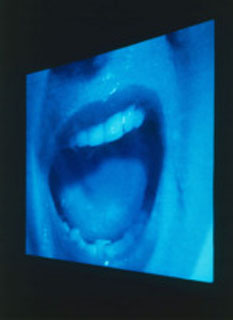Douglas Gordon is widely regarded as one of the leading exponents of video art. Born in 1960, he studied at Glasgow School of Art before attending the Slade School of Fine Art in London, where he soon came under the influence of post-structuralist and deconstructionist schools of criticism. He was interested in the cinema, but, as he remarks in an interview quoted in the catalogue to his new exhibition at the Royal Scottish Academy in Edinburgh, “this was, of course, the time when, if you were at art school, you got into a structuralist way of analysing every ****ing thing available. And I realised when I was going to the cinema at that time, I was actually thinking more about things that weren’t on the screen – maybe the position of the camera, the sound engineer, or whatever extraneous aspect of film making. Whatever. The bottom line was that I just couldn’t enjoy it any more. The idea of enjoyment just left me.” Gordon subsequenly went on to make the provocative statement that “cinema is dead”.
On the evidence of his current exhibition, a retrospective of sorts, he has spent much of his career channelling that sense of aggrieved joylessness – the disenchantment of a one-time cinephile – into works of art that set out variously to attack or dismember established masterpieces of the cinema. Gordon introduced himself, in 1993, with a piece entitled 24-Hour Psycho, a video installation that consisted of a cinema screen suspended from the ceiling of a darkened room, on to which the artist projected Alfred Hitchcock’s Psycho – but without its original soundtrack, and at only two frames per second, so that the film would take an entire day and night to play out. At the time, the artist described his method as a...

Douglas Gordon at The Royal Scottish Academy
19-11-2006

